Badrinath Dham:
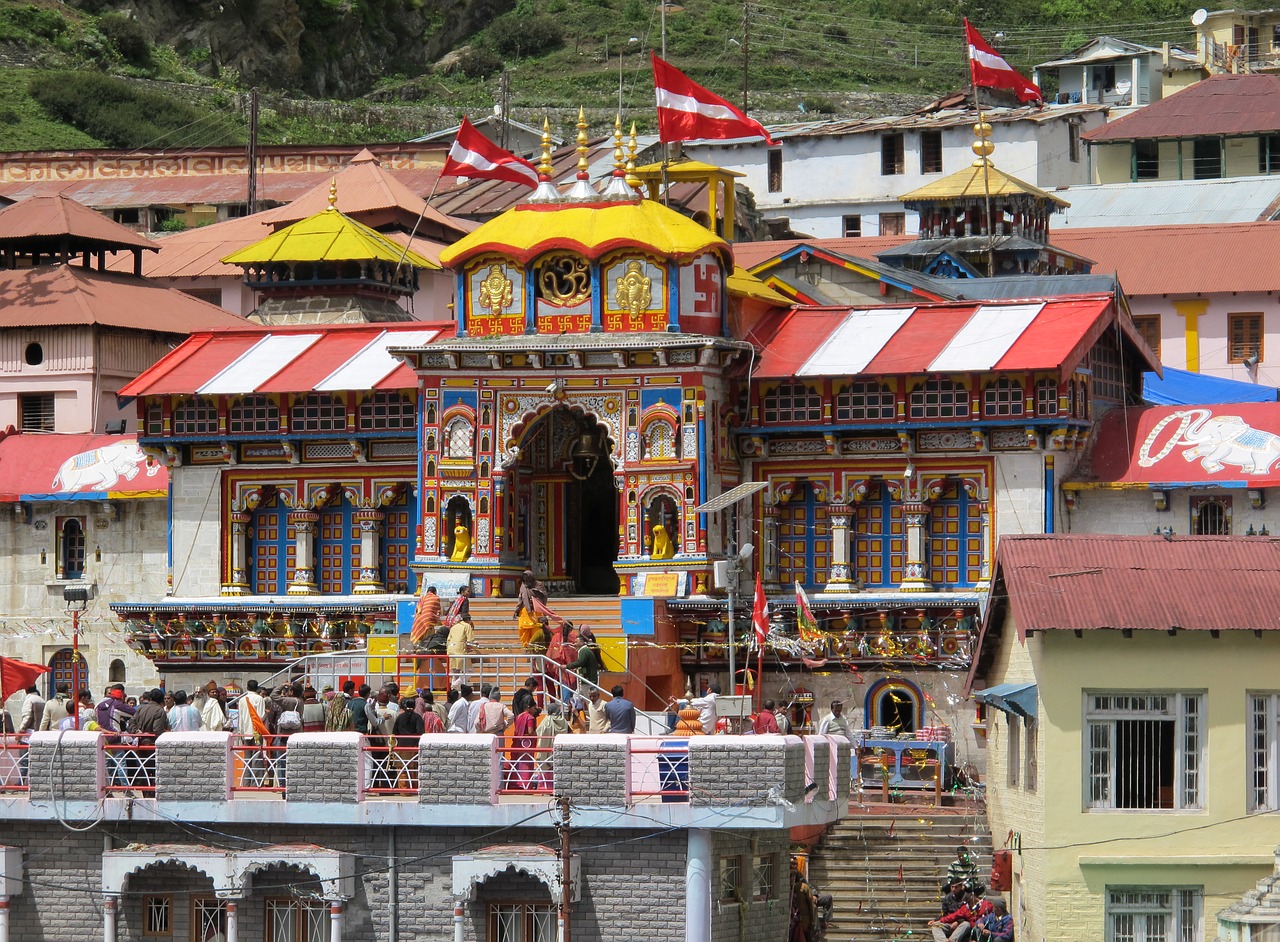
Located between the two mountains Nar and Narayan, Badrinath Dham is a majestic sight as well as the the most important of all the Char Dhams. Lakhs of tourist come every year to this sacred Badrinath town to seek blessings and to get a glimpse of the famous temple of Shri Badrinathji.
Badrinath is the only Shrine which is part of both Chota Char Dham and India Char Dham. Badrinath is one among four pilgrimage centres in four corners of India. Among them were Badrikashram (Badrinath Temple) in the North, Rameshwaram in South, Dwarkapuri in west and Jagannathpuri in east.
Bhagvat Puran Describes: There in Badrikashram the Supreme being (Vishnu), in his incarnation as the sages Nar & Narayan, had been undergoing great penance since time immemorial for the welfare of all living entities.
History About Badrinath

The Badrinath tirtha derives its name from the native word Badri, which refers to a variety of wild berry. Badrinath temple history has its own uniqueness and Legendaryness. There are a lot of tales about Badrinath temple. It is stated that when Lord Vishnu sat in penance in these mountains, His spouse Goddess Laxmi took the appearance of a berry tree and shielded Him from the fierce sun. It is not only the Lord’s dwelling place, but also the abode of countless pilgrims, saints, and sages who come to meditate in search of enlightenment.
According to SkandPuran the idol of Lord Badrinath was recovered by Adiguru Shankaracharya from NaradKund and was re-enshrined in the 8th century A.D. in this temple. Skanda Purana describes more about the place and says: “There are several sacred shrines in heaven, on earth, and in hell; but there is no shrine like Badrinath.”
In the history of Badrinath, the sages Nara and Narayana, the ‘fifth avatar of Lord Vishnu’, practised penance in the temple, according to the Vamana Purana. The religious narratives from several ancient Hindu scriptures abound in Badrinath. According to mythic, Badrinath is often called as Badri Vishal, and was a place of pilgrimage for Hindus.
Tourist Places Near Badrinath
There are many pilgrimage and tourist places to visit near Badrinath Temple, some of them are trekking and skiing destinations as well. In Badrinath, there is so much to discover. Here is the list of sites, which pilgrimages can visit during their 4 dham yatar or Badrinath Tour.
Saraswati River
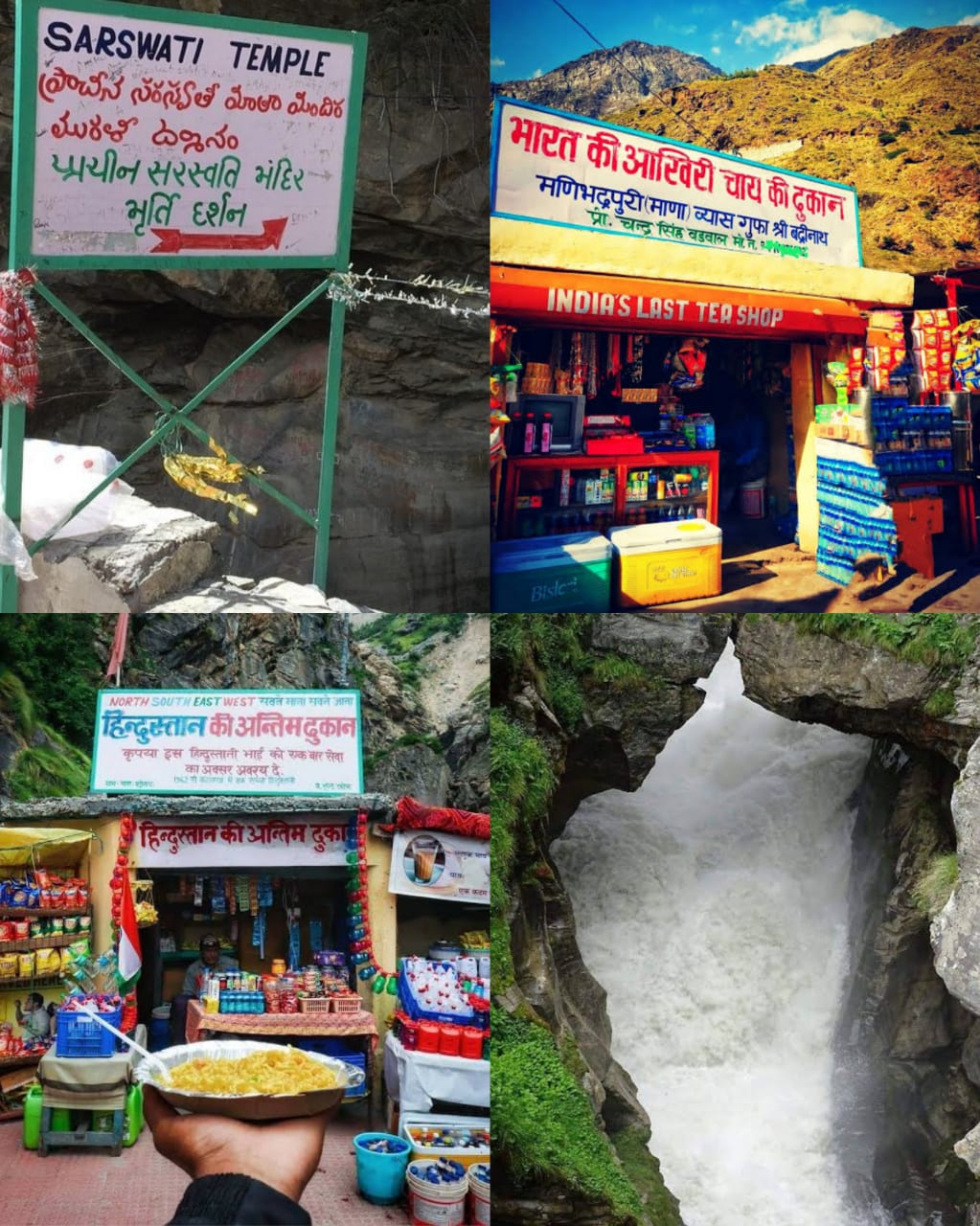
The Indian population have always worshipped the river systems that run across the entire subcontinent. These riversides have been host to the earliest civilisations in the world. Having found its mention in the important Hindu text of Rig Veda this river plays an important role to Hindus. the history of this river is very tumultuous and its location is reported to have changed over a period of time. rig Veda mentions the river to be in between Yamuna in the east and Sutlej in the west while in later Vedic texts it is mentioned that the river had dried up into a desert. Whatever the history of Saraswati river is, it does not lessen the importance in a religious and holy context.
Origin of Saraswati River
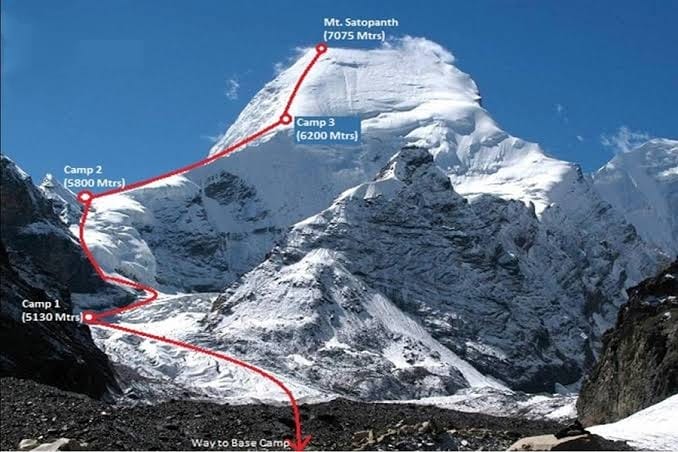
The river Saraswati is one of the tributaries for Alaknanda river whose source can be traced back to the grand Satopanth glacier and Bhagirathi Kharak glacier. Flowing through tight spaes in between the mountains this river meets Alaknanda at Keshav Prayag which is located close to the last village of India on the China border. Once the confluence takes place with Saraswati river, Alaknanda merges with Ganga in Devprayag which is then named Bhagirathi. One of the most popular tourist spots is a natural stone bridge built across the river called Bhim Pul in Mana which can easily be visited during Badrinath visit since it is situated at a mere distance of 3 kms from Badri Vishal.
Charan Paduka
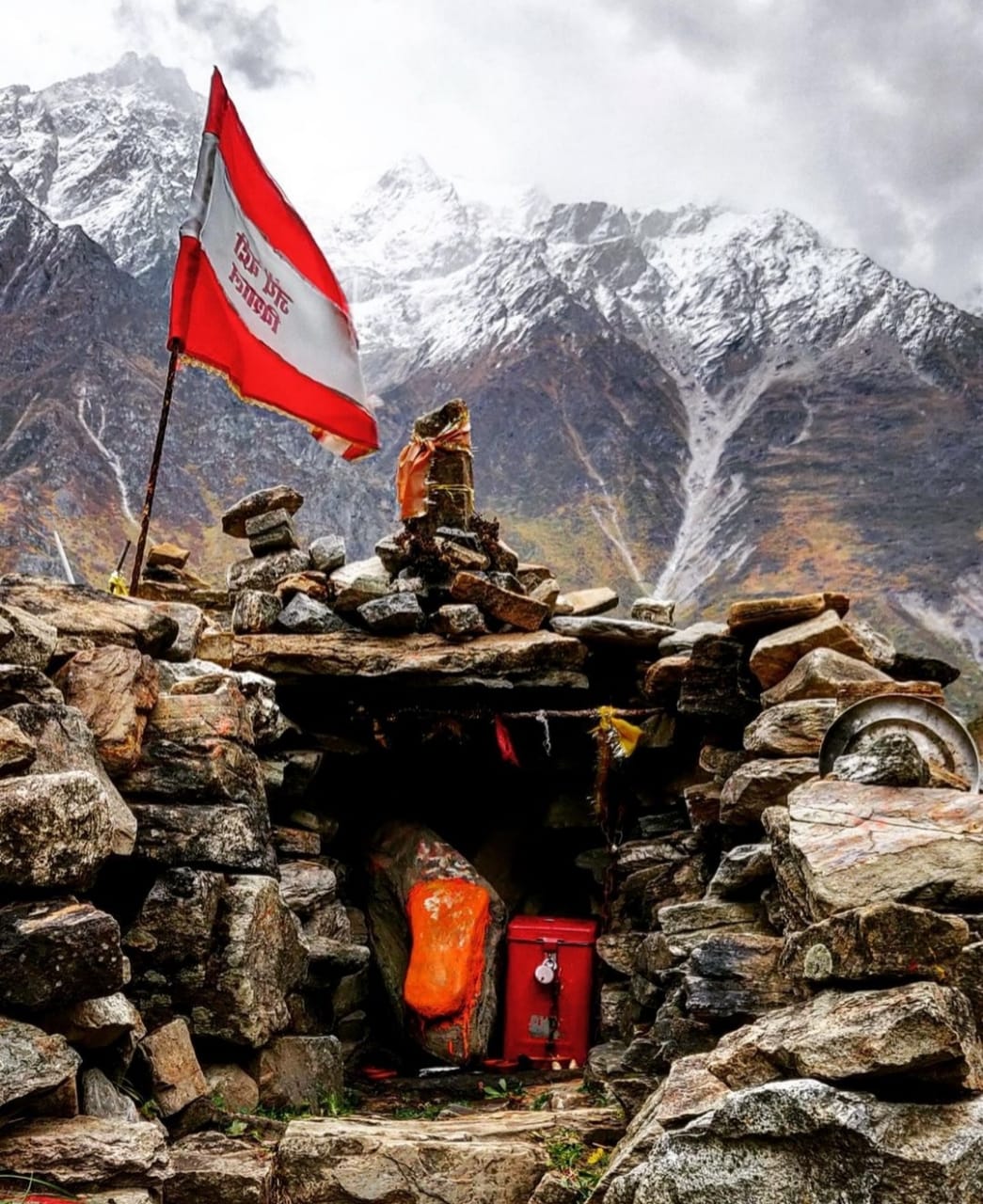
At a distance of 3 km from Badrinath, Charanpaduka or Charan Paduka is a beautiful rock, which is believed be holding the foot prints of Lord Vishnu. It is believed that the darshan of these footprints will relieve visitors from all aliments.
The Charan Paduka is perched at an elevation of 3,380 feet above sea level. According to Hindu mythology, Lord Vishnu set his foot on earth at this place. Bhagwat Purana says that Lord Sri Krishna advised his minister Uddhav to proceed to Badrinath with his Charan Paduka to get rid of his wrongdoings.
Charan Paduka can be reached by 3 km trek from Badrinath. The path towards Charan Paduka is on the left side of Badrinath temple. Walk few meters and on the right side you will see stairs going upwards. Follow the stairs to reach Charan Paduka situated at Narayan Parvat. The 3 km uphill trek takes about 1.5 hours to reach Charan Paduka.
The view from Charan Paduka is excellent. At one side you can watch Neelkanth Peak and the other side Nar Parvat. On the left side of Charan Paduka is Rishi Ganga flowing through a manmade diversion to create a waterfall. There are several caves and boulders on the path which lead to Charanpaduka. The rock holds a medical unit of Badrinath shrine board. This medical unit is well equipped and it holds all basic medical amenities.
Mata Murti Mandir
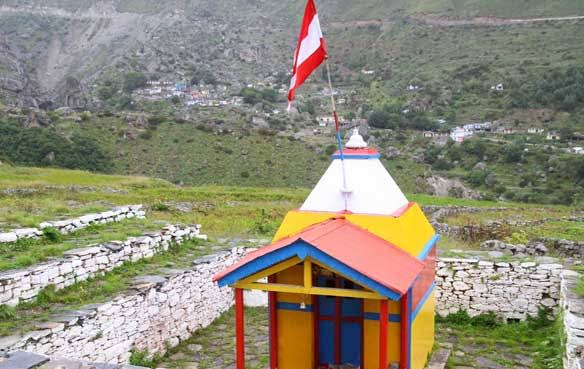
At a distance of 4 km from Badrinath Bus Stand, Mata Murti Mandir is an ancient Hindu temple situated on the banks of river Alaknanda near Badrinath.
This temple is dedicated to Mata Murti, who is the mother of two sons Narayan and Nara. According to mythological belief, Mata Murti had prayed to Lord Vishnu to come out of her womb and take his next incarnation (avatar). Lord Vishnu agreed and came to this world in the form of twins, Nara and Narayana, from her womb to kill a demon.
There is a popular belief that the goddess has the power to grant detachment to those who meditate here sincerely. It is frequently visited by visitors to worship the mother idol on Shukla Tritiya, Ashtami and Chaturdashi. The mother of Shri Badrinath is worshiped with great devotion at the time of Mata Murti Ka Mela.
Timings: 6 am – 6 pm
Mana Village:
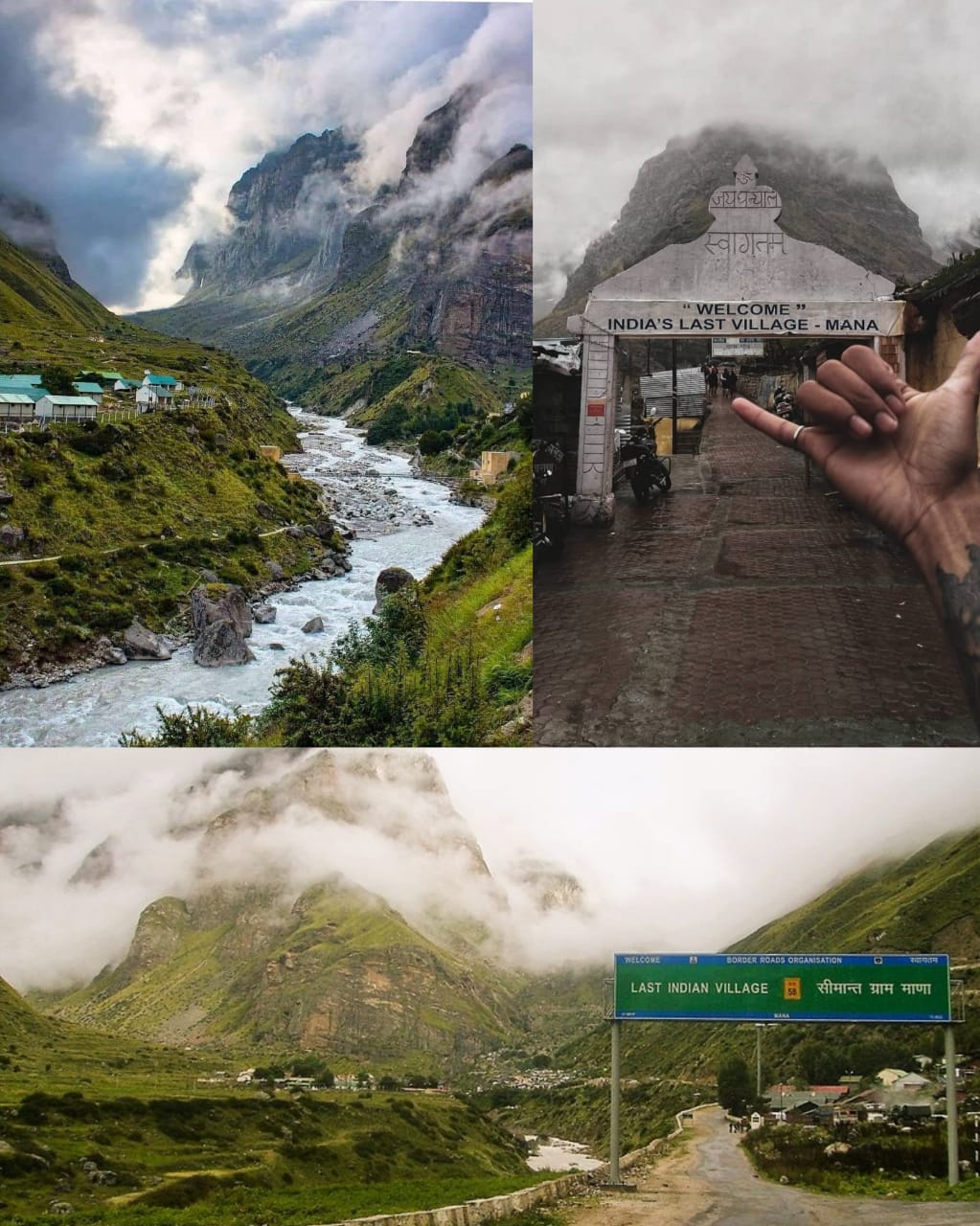
of the most scenic and cultural heritage places is ‘Mana village,’ which resides in the midst of the Chamoli district of Uttarakhand at an elevation of 3200 meters.
It is also an important part of Indian mythology scripture ‘The Mahabharata’ as this was the place the Pandavas crossed before continuing their journey to heaven.
The place is at a distance of 4 KM from the great pilgrimage ‘Badrinathji.
The way to travel to this village is by booking a taxi, which costs around Rs. 300 for one side or trekking, which is preferable because this 4 KM of trek holds the most beautiful and iconic mountain points in between, and no one would want to miss that.An interesting part about this place is that the people take pride in living in this village and most of their shops have hoardings that say ‘India’s last village shop.’
Shri Ghantakarna:
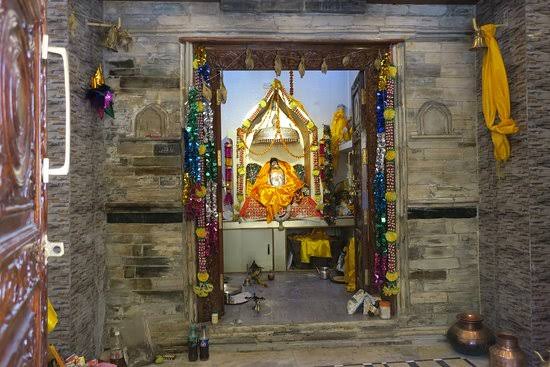
There are many folktales, mythological evidences and legends about the origin of Shri Ghantakarna. Shri Ghantakarna is considered one of the Bhairav incarnation of Mahadev Shiva. Shri Ghantakarna is considered a public beneficiary deity in Hinduism as well as in Jainism, Buddhism. In the Garhwal division of Uttarakhand, in Tehri, Podi, and Badrinath, Shri Ghantakarna is considered as the Kshetrapal deity.
The idols of Bhairavs dancing in a boat have also been engraved on the stones of the world famous Sun Temple of Konark to Shri Ghantakarna. A statue of Ghantakarna is in a calm state and is in a fierce form.
The Shaktipeeth of Assam is the temple of Shri Ghantakarna near Maa Kamakhya temple. There is a mention of Shri Ghantakarna in a story of Rabindranath Tagore.
In Garhwal, Ghantakarna is considered to be a great, powerful and shield-bearing deity, who bestows wealth and happiness. There is a temple of Ghantakarna in Badrinath and it is called Devdarshini (God see). Before worshiping Lord Badrinath, there is a law to worship Shri Ghantakarna. Ghantakarna is considered to be the Kshetrapal (protector) of Badrinath Dham, so the doors of the Ghantakarna temple are opened before the deception of Badrinath, which is closed only after the deception of Badrinath.
Ghantakarna is revered and worshiped in the limbo of the Himalayas. In Tehri Garhwal, Khili, Lostu, Pauri Garhwal, Khirshu, Chinese, Bali Kandarsun, Chopda Kot and Dudhatoli, Ghantakarna is worshiped everywhere. In Lostu, Shri Ghantakarna’s Jatra is organized every 12 years like a Mahakumbh.
The presence of Virbhadra in Rishikesh, Mahabal in Ghandyal and Manibhadra in Badrinath also attests to the dominance of Shiva and his Ganas over this entire region.
But in some folklore a different story goes about Ghantakarna. In the Jagaras, he is said to be the son of the Pandavas i.e. Arjuna (Khati) and Subodh (Subhadra) and the nephew of Narayan (Krishna). He is considered as Abhimanyu. Whereas in Chinese Pauri, the son of Bhima and Hidimba (Ghatotkacha) is considered to be Barbarik. Remember that Barbareek is famous in Rajasthan by the name of Shyamkhatu.
Ghantakarna is also worshiped in South India and Gujarat, in Kerala the dance drama of Lord Krishna meeting Krishna in Leelas is described. Shri Ghantakarna is also considered as the commander of Yaksha Raj Kuber. Shri Ghantakarna was also one of the Shiva ganas who broke the yagya of Daksha Prajapati.
According to the Puranas, the origin of Shri Ghantakarna has been said that when Shiva’s son Skandha i.e. Kartikeya was made the commander of the Dev army to kill Tarak Asura in the Devasura battle, Brahma created four mighty heroes to protect him, whose speed was wind. and he could increase or decrease his power at will. Ghantakarna was one of them. The names of other heroes are Nandisen, Lohitaksha and Kumudamalin.
These are the symbols of the five expressions of Param Shiva, Sadyojat, Omdev, Aghor, Tatpurush and Ishaan. In Satyuga, these monoakshars were known as Shivacharya, ‘Dwikshara Shivacharya’, ‘Tri Kshar’, ‘Shivacharya’, ‘Chatusakshara Shivacharya’ and ‘Panchakshara Shivacharya’
In Kali Yuga, they incarnated as Revanasiddha, Marulasiddha, Ekorama, Panditaradhya and Visvaradhya and they rendered the Lingayat sect. Thus Shri Ghantakarna was born in Kaliyuga as Ekoram Acharya from Bhimashankar Linga and he established Kedar Peeth. And likewise other Acharyas also appeared from different genders.
Shri Ghantakarna is also known as Mahabal. According to Linga Purana, when Lord Shiva incarnated in the form of Guhavasi in the 17th Dwapar Yuga, he had sons named Utthya, Vamdev, Mahayog and Mahabal.
In Jain texts, the name of Shri Ghantakarna has been mentioned as Mahabala or Tungabhadra, who was the king of Ratna Sanchayi / Manglavati Nagar who later became famous as Abhinandan Nath. In Jain legends, he is worshiped as the 30th Ghantakarna Mahabir out of 52 protector heroes. There is a temple in Mahudi in Gujarat which is famous in Jain society all over India. In another story, he is described as the king of Srinagar Shriparvat. There is a special law of worship of Ghantakarna in Jain literature and there is a law of chanting the mantra of Ghantakarna for various remedies like death, mohan, upliftment, attainment of Lakshmi, freedom from diseases. In Jain stories, Shri Ghantakarna is known as the deity who removes negative energies and obstacles.
According to the Mahayana sect of Buddhism, Mahabala is the incarnation of Amitabha and is the Dikpala of the North-West direction.
Shri Ghantakarna’s loyalty to Shiva is unbreakable. Ghantakarna was an ardent devotee of Shiva and he did not like to hear even the name of any other deity, so he kept bells in his ears.
Shiva wanted to make them understand that there is no difference between Shiva and Vishnu. Therefore he appeared before Shri Ghantakarna in the form of Harihara i.e. half Vishnu and half Shiva. At that time, Ghantakarna was offering him novaidhya. When Ghantakarna saw that the fragrance of Novaidhya was going into Vishnu’s nostrils, he put his fingers in his nostrils so that the fragrance could only enter the nostrils of Lord Shiva.
Shri Ghantakarna is as simple and kind as his East Lord Mahadev Shiva. Whatever the devotees ask for, Shri Ghantakarna fulfills them. He is also worshiped as Kshetrapal or Chhetrapal. Like Mother Shakti, her vehicle is also a lion. And the bow and arrow and the mace are their weapons.
Devotees join their caste (jatra). They are offered bread made of flour and jaggery, fruits and liquids. Shriphal’s offerings are considered to be the best. For thousands of years he has been in our consciousness and will remain so.
The following mantra of Shri Ghantakarna is considered to be the medicine of all diseases.
श्री घंटाकर्ण मूल मंत्र
ॐ घंटाकर्ण महावीर, सर्वव्याधि विनाशक,
विस्फोटक भयम प्राप्तो रक्ष रक्ष महाबल||1||
यत्र त्वम् तिष्टते देव, लिखितोअक्षर पंक्तिभी,
रोगास्तत्र पर्णश्यान्ती , वात पित कफोढ्भावा||2||
तत्र राज भयं नास्ति, यान्ति कर्ने जपक्ष्यम,
शाकिनी भूत बेताल, राकक्षासा च प्रभवतिन ||3||
न अकाले मरणम तस्य न सर्पेंन द्स्यन्ते,
अग्निस्चौर भयम नास्ति , घंटाकर्णओ नमोस्तुते ||4||
ॐ ह्रीं श्रीं क्लीं घंटाकर्णये ठ: ठ : ठ: स्वाहा
जय श्री घंटाकर्ण
Ganesh Gufa
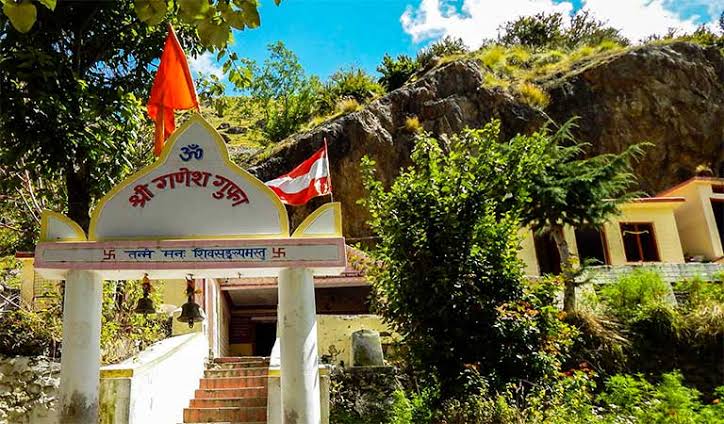
There is a place named Vyas Pothi in Mana village, about 3 kilometers from Badrinath in Uttarakhand, near the border of India and China. Here is the cave (Vyas Gufa Mana) of Maharishi Ved Vyas, the author of Mahabharata. There is also Ganesh cave near Vyas cave. It is believed that this is the same cave where Maharishi Ved Vyas ji spoke the Mahabharata and Lord Ganesha wrote it. In this cave situated amidst the dense valleys of the Himalayas, Lord Ganesha continued to write as Ved Vyas ji spoke. In this way the holy epic Mahabharata was composed. Devotees believe that even today Ved Vyas ji and Lord Ganesha are present in this cave.
Devotees going on Badrinath Yatra do not forget to visit this place. The idol of Lord Ganesha is installed in the Ganesh cave. Its roof is of a mountain. Its circumambulation is done from the mountain itself. The temple of Vyas ji is built in the Vyas cave. In the temple there is a statue of Vyas ji along with his son Shukdev ji and Vallabhacharya. Apart from these, an ancient idol of Lord Vishnu is also established here. On entering this cave, there is an immense feeling of peace and spiritual happiness. On one side of this place is the Badrinath Dham, the abode of Lord Vishnu, while on the other side is the origin of Saraswati, the goddess of knowledge in the form of a river
Lord Ganesha, the son of Lord Shiva and Mother Parvati, is considered a well-wisher and the god of wisdom and intellect. In such a situation, whenever any auspicious work is done, before that Lord Ganesha is remembered. When Ved Vyas ji thought of composing the Mahabharata, he not only remembered Lord Ganesha but also got him ready to write the Mahabharata. However, Lord Ganesha had put a condition for this that you keep on telling the story continuously. If you stop anywhere, I’ll leave the writing job. It is said that Vyas ji also followed the rule. Looking at the Vyasa cave from outside, it seems as if several texts are stacked on top of each other. Hence it is also called Vyas Pothi. According to other belief, the Pandavas went to heaven through this village, but due to the cold, all the four Pandavas and Draupadi got lost, only Yudhishthira could withstand the cold due to following the righteousness and truth and could reach heaven in the body. There are many such caves or places of ancient times on earth, where some secrets are definitely hidden. Today we are going to tell you about such a cave of Mahabharata period, where such a secret is hidden, about which no one knows and it is believed that even after wanting that secret, no human can know. This mysterious cave is in Mana village of Uttarakhand. This village is called ‘Last Village of Hindustan’ or ‘Last Village of Uttarakhand’.This cave full of mysteries is known as ‘Vyas Cave’. Although it is a small cave, it is said that thousands of years ago Maharishi Ved Vyas had compiled the Vedas and Puranas by staying in this cave. It is also believed that in this cave Ved Vyasa composed the epic Mahabharata with the help of Lord Ganesha.Ved Vyas Cave is also famous throughout the country for its unique roof. On seeing this ceiling, it seems as if many pages are stacked one on top of the other. There is a mysterious belief about this roof. It is said that this is that part of the story of Mahabharata, about which no one knows except Maharishi Ved Vyas and Lord Ganesha.It is believed that Maharishi Ved Vyas had got Lord Ganesha to write those pages of Mahabharata, but he did not include them in that epic and he turned those pages into stone with his power. Today the world knows these mysterious pages of stone by the name of ‘Vyas Pothi’.Now the thing to think about is that what was that secret, which Ved Vyas did not want to tell to the world. Well, whether this ‘lost chapter’ of Mahabharata is true or a story, no one knows about it, but at first glance, the ceiling of Vyas cave looks like a giant book is kept on it.. Even today in Mana, the last village of India, the police who take the Pandavas to heaven are present. According to mythological belief, while going to heaven, this bridge has been built by Mahabali Bhima by pulling two rocks.This huge bridge made of two rocks is near Badrinath. This is where this Bhimpul is built on the Saraswati river.The one who is going to heaven in the last village of IndiaThis astonishing bridge has been built connecting both the banks of the river with a large stone rock. The Saraswati river flows below it.According to mythological beliefs, this feat of building a bridge with such large and heavy stones was done by Pandu’s son Mahabali Bhima.According to the beliefs, when the Pandavas reached this place to go towards heaven, Draupadi was afraid to cross the river after coming here.When the Saraswati river refused to ask for a way by the Pandavas, in anger, Bhima pulled the rock and built a bridge over the river for Draupadi. Since then this bridge has been named as Bhim Pul.Saraswati, considered invisible, flows from under this bridge with great speed and noise. Later this river becomes invisible after meeting the Alaknanda. After this the Saraswati river becomes invisible.It also has a mythological belief that when Saraswati refused to give way, Bhima angrily hit the ground with his mace, causing the river to flow into the Hades.
Muchkund Gufa
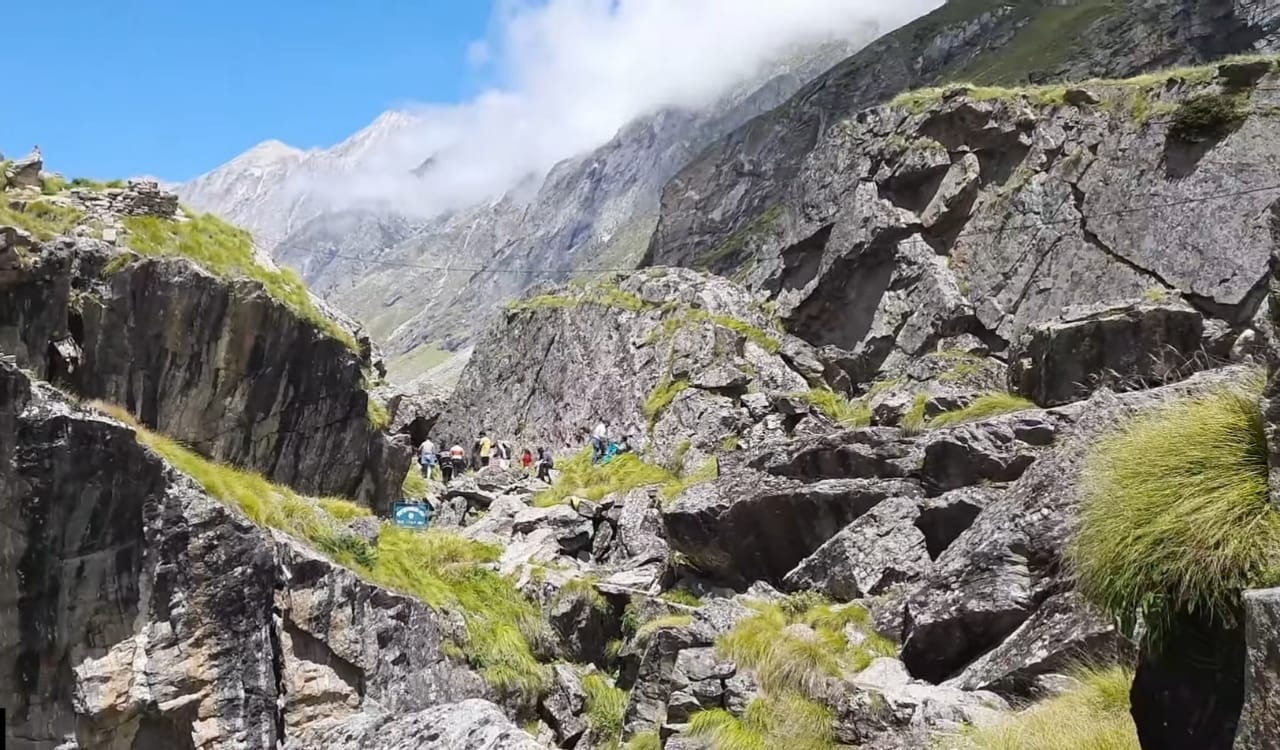
Muchkund was the ancestor of Lord Rama. On helping the Devas against the Asuras, he asked Indradev to sleep without any inhibitions. Together it was said that whosoever disturbs the sleep, it will be consumed immediately. After that he went to this cave. The Kalayavan demon was after Lord Krishna. To get rid of Kalayavan, Lord Krishna came to the same cave where Muchkund was sleeping. Kalayavan also came there and challenged Muchkund in the dark. Muchkund’s eyes fell on Kalayavan and he was consumed there.
Vasudhara Falls
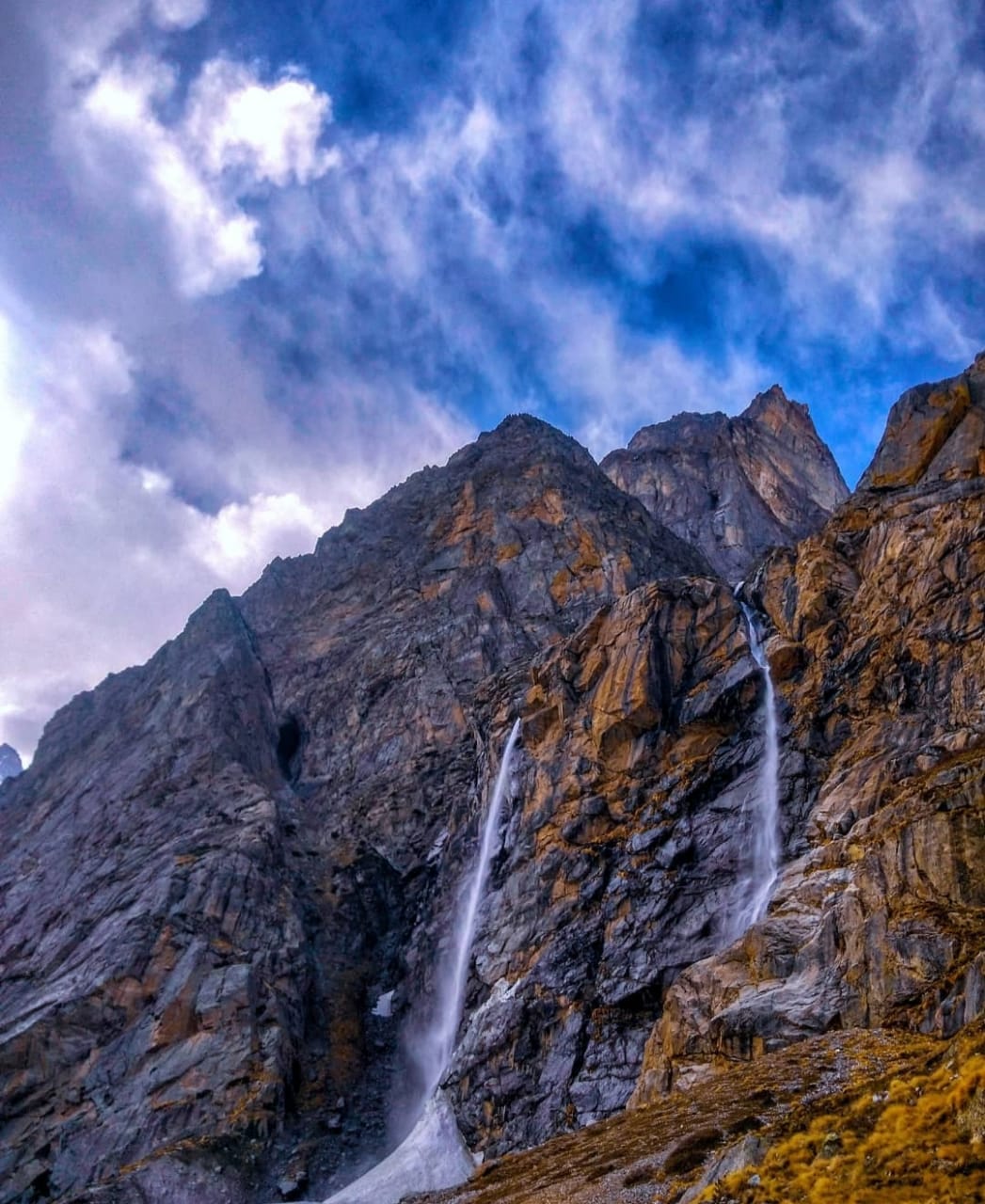
Waterfalls have always fascinated the human imagination. Located 5 km west of Mana village, Vasudhara is a 145 m high waterfall surrounded by snow-capped peaks, glaciers and high cliffs. The strong wind sometimes scatters the entire volume of the waterfall and it appears as if the waterfall has stopped for a minute or two, giving rise to many superstitious thoughts in the minds of the local people. by road
Vasudhara is on a 7 km trek from Mana village which is situated at a distance of 2 km from Badrinath. State transport buses ply regularly between Badrinath and Rishikesh (280 km). Local transport Union and state transport buses and taxis run regularly between Badrinath and Rishikesh (280 km), Haridwar (300 km), Dehradun (325 km) and Delhi (540 km).
Satopanth Lake :
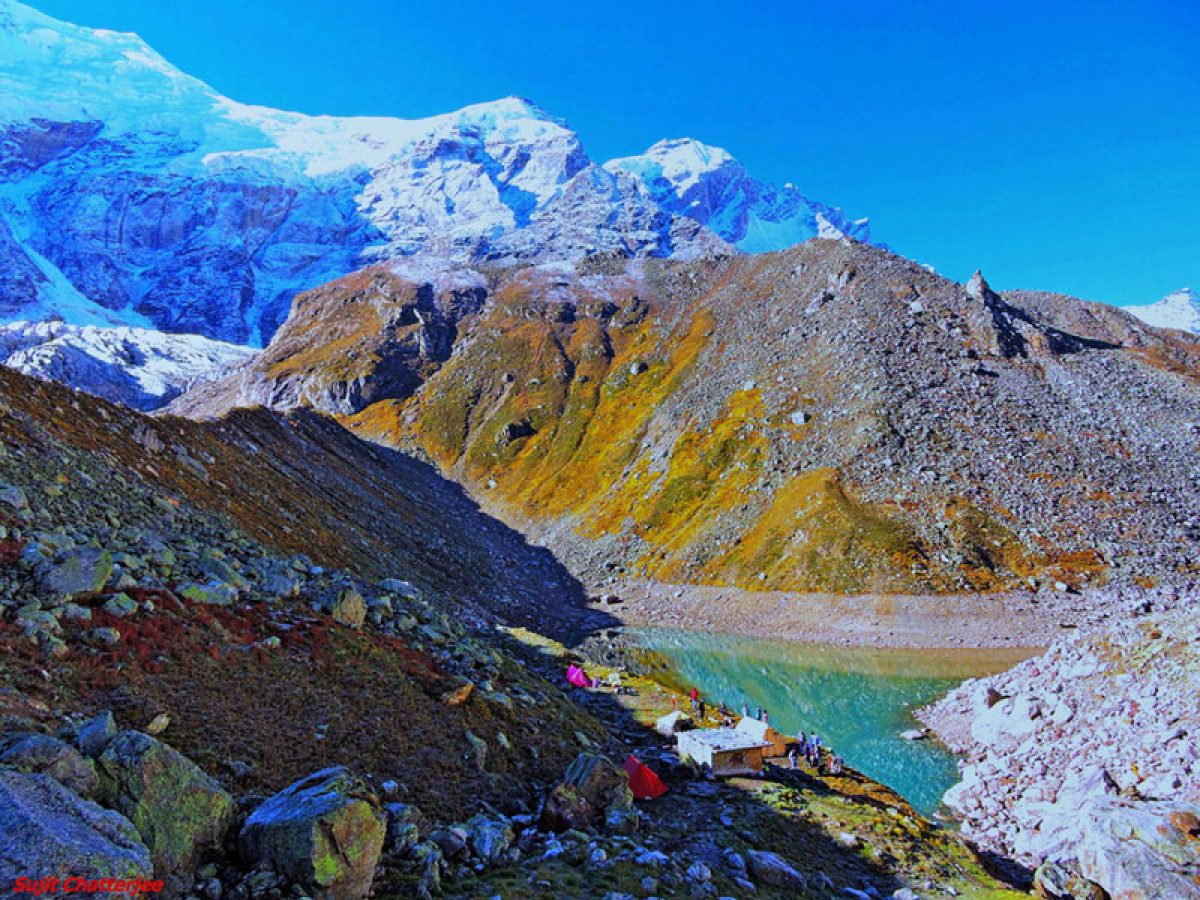
Satopanth Tal is a lake in Uttarakhand, India, located in the midst of snow-capped peaks at an altitude of 4,600 metres (15,100 ft) above sea-level. The lake is considered to be of religious significance to the local people; residents of Mana village throw the ashes of the dead in the lake Many people believe that the Trimoortis, viz, Brahma, Vishnu and Mahesh, bathe in the lake in an auspicious day. Also some types of birds are found here, which pick up the pollutants of the lake and thus keep the lake clean. These birds are not found anywhere.[clarification needed] The local belief is that they are the Gandharvas disguised, who guard the lake against evils
An untouched Glacier Lake, Satopanth Tal is a triangle-shaped hidden treasure amidst the magnificent Garhwal region. The destination happens to be an impeccable religious site for the locals and is believed that the three supreme deities of Hinduism, Brahma, Vishnu, and Maheshwara meditated on the three different corners. Nestled at a huge elevation of 4600 meters above sea level, this crystal clear green water lake is beautifully bedecked amid the snow-shrouded peaks.
This renowned trekking trail in Uttarakhand holds immense significance in Hinduism and attracts thousands of travelers from all across the globe. A massive crowd of devotees treks to this lake on solar and lunar fortnights to take bath into it as this is considered very auspicious. This gorgeous site also offers a great opportunity to have glimpses of the Himalayas.
Along with enjoying the thrilling trekking experience, one can also witness the surreal beauty of the scenic vistas and the glory of the gorgeous Vasudhara Falls. In addition, the traveler also gets an opportunity to capture the awe-inspiring views of Himalayan gigantic such as Chaukhamba, Neelkanth, and Swargarohini.
Niti Valley and Niti Pass:

Subject: Geography
Context: There are many villages which has been cut-off due to recent flood in Uttarakhand
Concept:
The Uttarakhand flood has cut-off this and other remote villages.
Niti Valley is one of northernmost region of the Uttarakhand. It is the las village in the valley before border meets with the South Tibet.
Niti Pass is an ancient trade route between India and China which was closed post 1962 war.
They are mostly inhabited by Bhotiyas or Chamoli’sMarchas, a community of Mongoloid origin.
The adverse weather conditions make the area inhabitable only for 6 to 8 months leading to practice of transhumance in the region
Malari village:
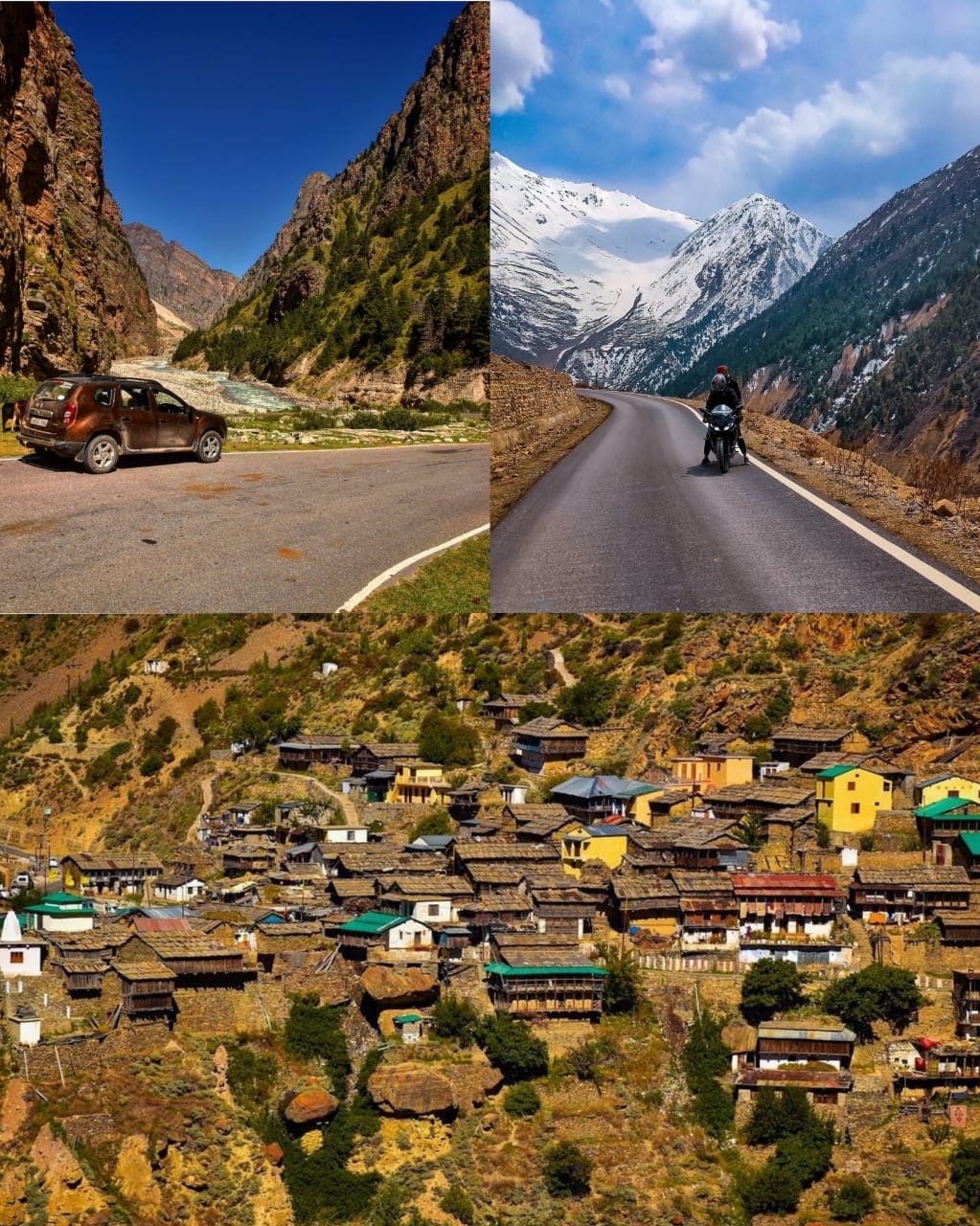
Malari village is situated in the extremely isolated corners of the Dhauli Ganga valley. This tiny village lies in the Nanda Devi Biosphere reserve near the Tibet border. A World Heritage site, this area is located 61 km from Joshimath, in Chamoli District of Uttarakhand.
Almost everyone has heard of the Valley of Flowers (and rightfully so), but no one is aware of the Valley of Perfumes located near to this village! The Valley of Perfumes is home to hundreds of species of flowers, all adding up to make for the most magnificent of aromas. The valley can be reached using two-wheelers and while your sense of sight has been gifted enough during this trip, your sense of smell will be delighted too! Must visit.
Govindghat:
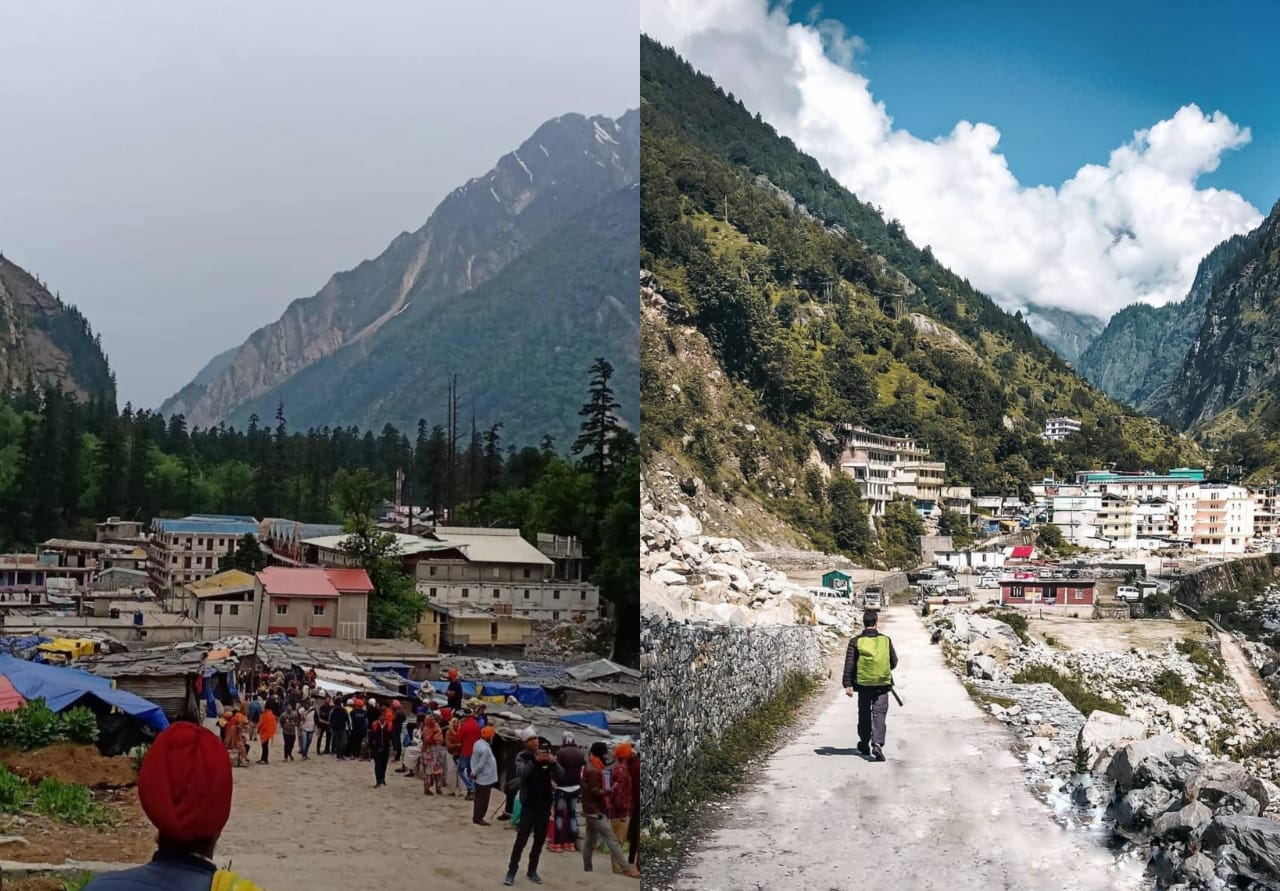
Situated on the way to Badrinath at the convergence of the Rivers Alaknanda and Lakshman Ganga in the Chamoli district is a beautiful town named Govindghat. A pristine destination of Garhwal, Govindghat is visited by not just the devotees but also the adventure lovers. This place is situated at an altitude of 1800 m and is considered an appropriate base for those heading to the popular pilgrimage site of Hemkund Sahib and the breathtaking Valley of Flowers. This famous tourism place in Uttarakhand
Timmarsain Mahadev:
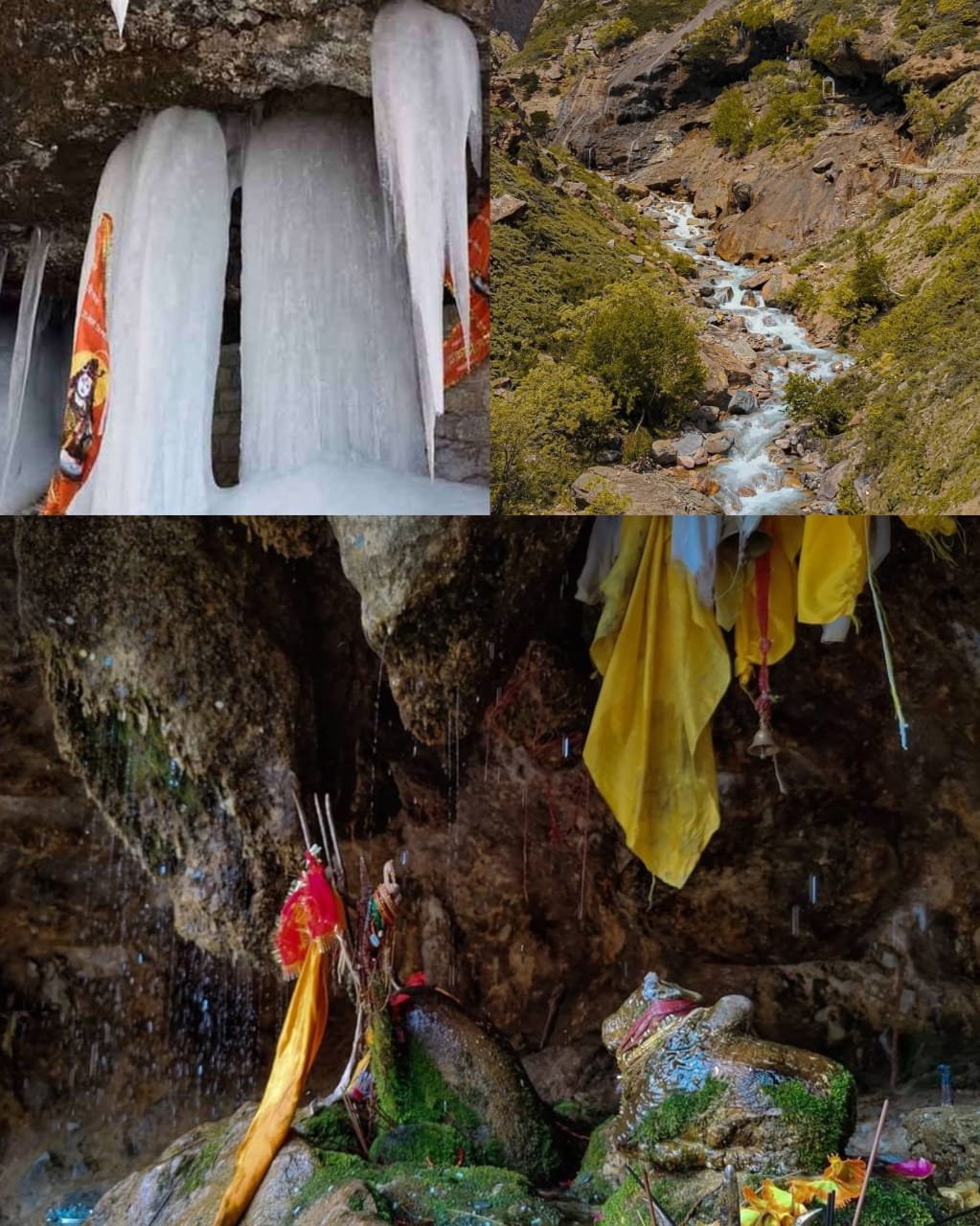
Baba Barfani, eternal name of Lord Shiva, is present near border village Niti in Uttarakhand. Local villagers regularly pay respect at Baba Barfani cave for past many decades. Here Baba Barfani could be seen same as in Amarnath. Now outside world could also visit this sacred shrine of Lord Shiva where Baba Barfani can be seen for 2-3 monthsLocally named ‘Babuk Udiyar‘, Baba Barfani can be seen in the cave located in a place named Timarsain. This sacred cave also locally named as Timarsain Niti Mahadev Temple due to its location in Timarsain, Niti. This Timarsain Mahadev yatra is also called ‘Saunsa Yatra‘ by local people.Timarsain Mahadev – Baba Barfani
Located on Joshimath-Niti highway, just 1 km before world famous Niti village, Lord Shiva shivling is situated in a cave at 700 mtrs from the main road on the Timarsain mountain. Villagers always pay respect in the summer months. During the retreat of winters, an icy Shivling same as Baba Barfani in Amarnath develop in this cave too. This Baba Barfani is very huge, about 2-3 feet of height, which makes it a sacred site to visit for Lord Shiva devotees. Locals called it Baba Barfani and has been worshiping here for many decades. Baba Barfani could be seen from March till mid of April every year.Location of Baba Barfani Timarsain Mahadev Temple
Baba Barfani Timarsain Mahadev Temple is situated on the hill named as Timarsain. The temple is located at 700 mtrs from the main highway, just 1 kms before Niti village. The temple is located at 82 kms from Joshimath.
Pandukeshwar:
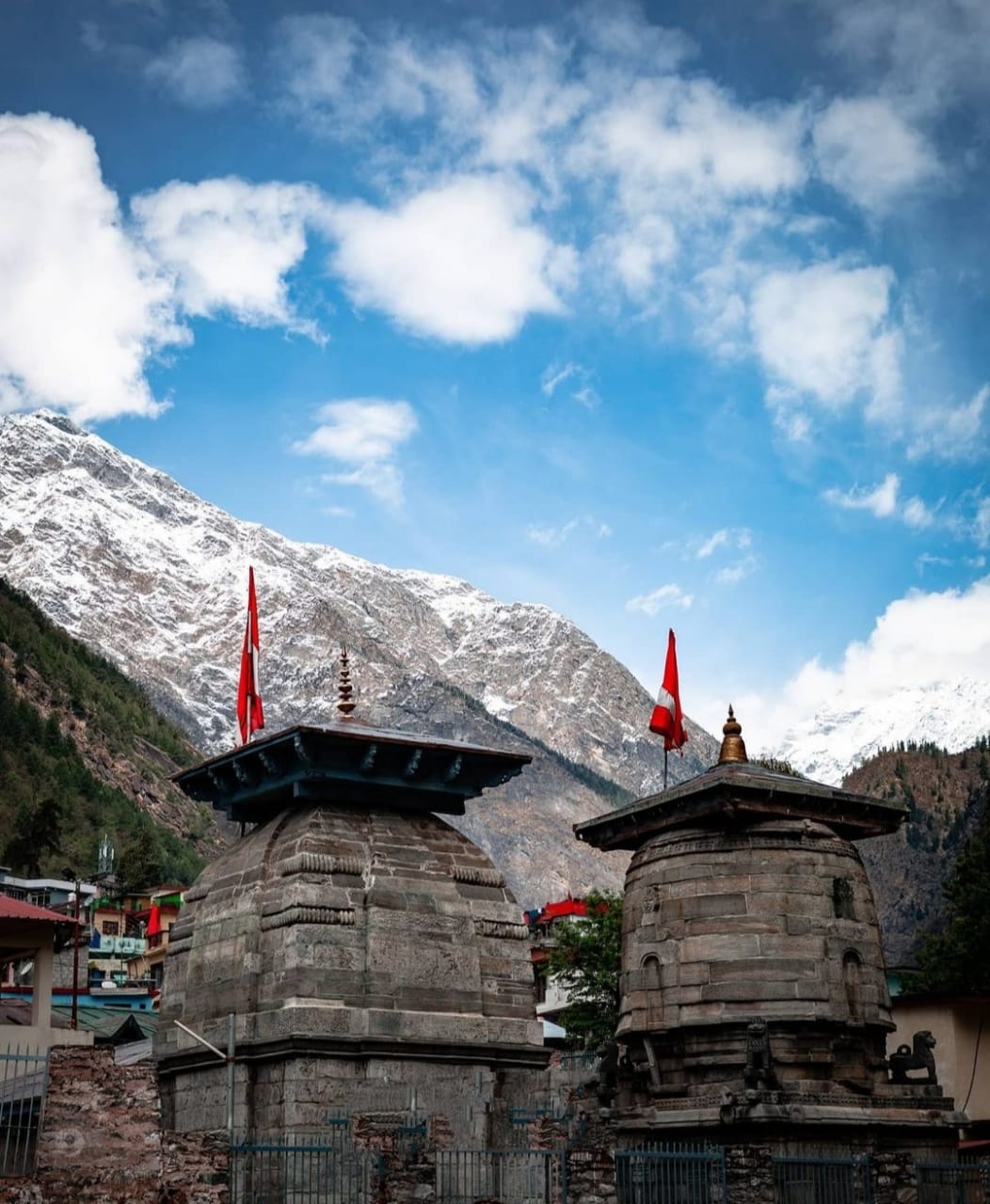
Pandukeshwar is a sacred place located in-route to abode of Lord Vishnu ‘Badrinath’ at an elevation of 1829 mtrs. At a distance of 18 km from Joshimath, Pandukeshwar, as per believe is the place where King Pandu, father of great Pandavas of Mahabharat epic, worshipped Lord Shiva.
There are two famous temples in Pandukeshwar. Yogadhyan Badri Temple, one of ‘Sapta Badri’ or seven Badri’s and other is Lord Vasudev Temple. Yogadhyan Badri Temple is the abode of Utsava-murti (festival-image) in winters when Badrinath is closed. Lord Vasudev Temple was believed to be built by Pandavas
Ghangaria:
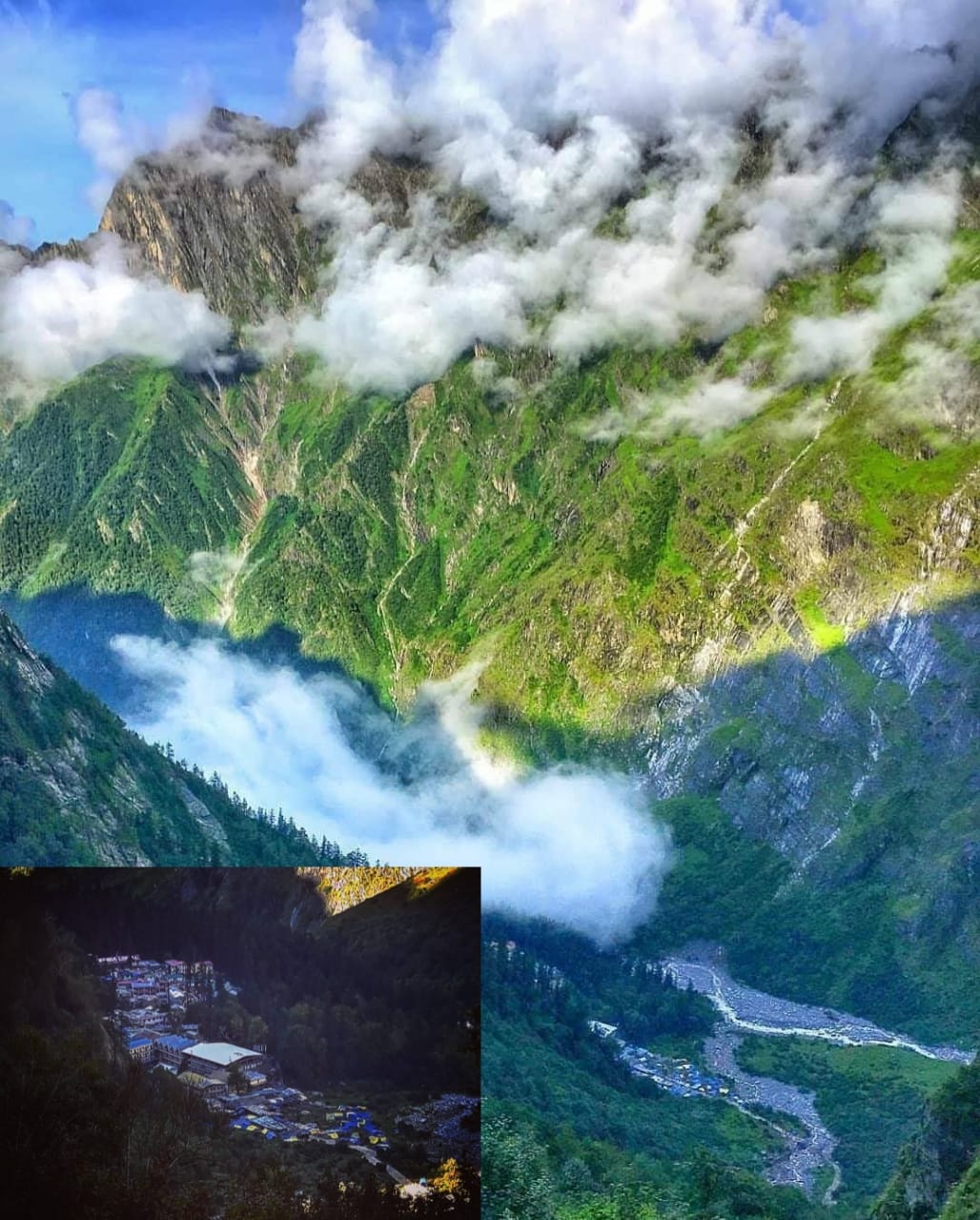
Ghangharia – A Valley in the Woods
Ghangaria is nestled on the confluence of River Pushpawati (coming from Valley of Flowers) and River Hemganga (coming from Hemkund Sahib, also known as Lakshman Ganga). This dewy place is snuggled in the bosom of the Himalayas and is the last human settlement on the Bhyundar Valley.
Ghangaria is a major stopover for travelers, visiting Hemkund and the Valley of Flowers. This bijou place is coiffed at an elevation of 3,050 meters in Uttarakhand. Ghangaria is covered by a thick blanket of snow during winters and remains closed between December-April.
About Badrinath Temple
Badrinath Temple, also known as Badrinarayan Temple, is a well-known Char Dham Temple. It is dedicated to Lord Vishnu and is located in Badrinath town. Along with the Badrinath temple, the Town of Badrinath has the Panch Badri temples including Yog Dhyan Badri, Bhavishya Badri, Adi Badri, and Vriddha Badri.The temple has North Indian style architecture with stone walls and carvings, as well as a colourful and powerful entrance gate.
Shree Badrinath Temple is divided into three sections
- The GarbhaGriha or sanctum sanctorum,
- The Darshan Mandap where rituals are performed, and
- The Sabha Mandap where devotees gather to pray.
The Garbha Griha portion of the Badrinath shrine has its canopy covered with a sheet of gold. The complex has 15 idols especially attractive is the one-metre-high image of lord Badrinarayan, finely sculpted in black stone. It represents Lord Vishnu seated in meditative pose called padmasan. The Darshan Mandap is a place in the Temple complex where devotees and pilgrims gather to pray for good fortune. Every puja must be preceded by a holy dip in the Tapta Kund. Unlike most Hindu temples, they are performed in the presence of the devotees.
Badrinath Opening & Closing Dates
Every year, the Badrinath Temple opening dates are determined in the month of April-May & closes for winters in the third week of November. As a result, the temple is closed for 6 months every year, during which time prayers to Badri Vishal are held in the Narsimha temple in Joshimath. This year Badrinath Temple has been closed for winter and will reopen on May 8 at 6.15 a.m.
Generally, the priests announce the dates for the opening of Badrinath Temple on Basant Panchami.Badrinath remains open for pilgrims from April-May till October-November and remain closed for winter months. Lord Badri Vishal worship continues to takes place at Winter Abode of Lord Badrinath, Narsimha Temple in Joshimath.
Before the closing date of Badrinath temple doors, the priests light a lamp in front of the idol in the sanctum. It is stated that throughout the winter months, Narad Muni, who obtained salvation here, continues with the prayer rituals. This notion is reinforced by the fact that when the temple is reopened after six months in spring, the lamp is still seen to be flickering
Badrinath Weather

Weather in Badrinath is quite pleasant and cheerful all year. But the best time to visit Badrinath is between May and November. Visitors may have trouble visiting the temple during the monsoon season (late June to August) because to severe rain. March to June is very pleasant with moderate climate, with average around 18°C. Summers is ideal for all sightseeing and pilgrimage.July to mid-September is accompanied with scanty rains and also temperature drops down to 15°C. The region is prone to occasional landslides and travelling can be difficult.
November to April are chilly days with average minimum touching near 5°C. Minimum can touch sub-zero levels and snow falling seen very often during winters. Because of the Badrinath weather in winters, temple is closed during this time for 6 months.
The best season to visit Badrinath is undoubtedly during the summer months of May to June, followed by September and October. Summers are mild and attracts a large number of visitors.
Online Puja Booking in Badrinath
Devotees can now book online pooja in advance for Badrinath Puja / Bhog/ Paath/ Aarti at a fair price. All pujas in Badrinath are done with immense mantrocharans and in a holy way by devoted priests.
It is a fairly simple procedure to book online puja in Badrinath temple. First, register at the Badri-Kedar website, log in to the website, then choose Puja/Bhog/Paath /Aarti. Enter your information correctly and make an online payment. Pujas of various kinds are performed in Badrinath.
There are separate rates for online Puja and advance Puja slots at the temple. You can select and book it accordingly. While sitting at your home, you can easily book the Puja slots with these simple steps.
Badrinath Dham Location
Badrinath is a Hindu holy town and a Nagar panchayat in Chamoli district in the state of Uttarakhand, India. Where is Badrinath located? It is located at an elevation of 11204 feet (3415 m), in the shadow of Nilkanth Peak. This town is well-served by all major forms of transportation, including air, rail, and road. The quickest way to go to Badrinath is by car or train.
There is no direct bus or train service to Badrinath. To get to Badrinath, you must first travel to Haridwar/Rishikesh. Once in Haridwar or Rishikesh, you may easily catch a direct bus or taxi to Badrinath.
The location of Badrinath is easily accessible by road as compared to airways and railways. It is located at a distance of 525 Km from Delhi & 296 Km from Rishikesh.
Now the question is how to reach Badrinath. There are regular buses operating to Badrinath from Delhi, Haridwar and Rishikesh.Well connected to Haridwar, Rishikesh, Dehradun, Dev Prayag, Rudra Prayag, Kotdwar, Joshi Math and other hill stations of Garhwal and Kumaon region.
.
Delhi to Badrinath Dham Yatra
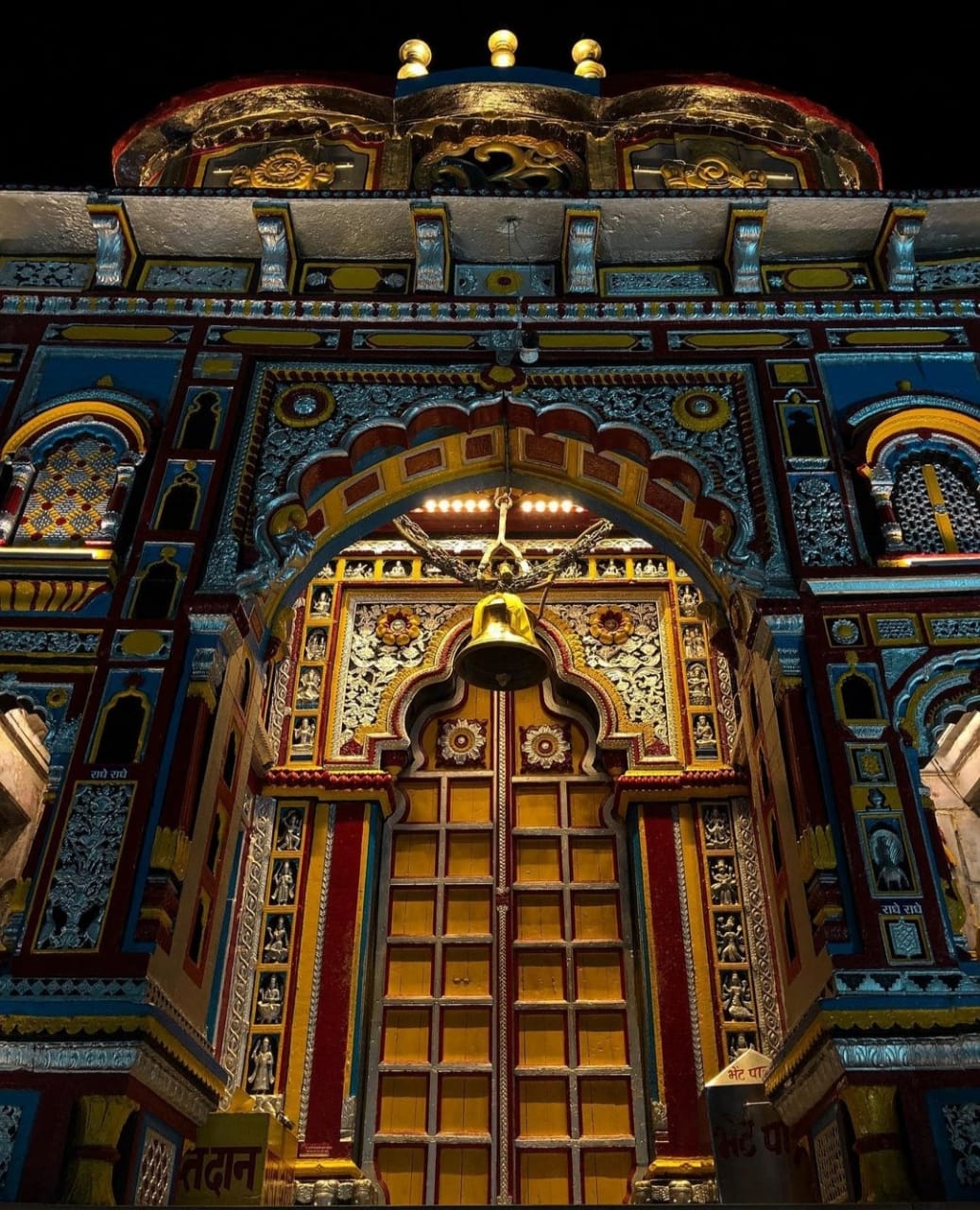
The national route NH58 connects Delhi to Mana Pass in Uttarakhand, near the Indo-Tibet border, and from there to Badrinath. There is no direct route by Air and Railways between New Delhi and Badrinath. If you are travelling to Badrinath from Delhi, you will need to change modes of transportation either once or several times. However, if you have your own vehicle, you can drive directly to the venue.
The overall distance between Delhi and Badrinath is 528 kilometres. And the distance can be covered in almost 12 hours. The best and cheapest way to travel from Delhi is in the pilgrim season of summer months. At that time, buses carry pilgrims from New Delhi to Badrinath via Haridwar and Rishikesh.
How to reach Badrinath Temple
Badrinath town got its name from Badrinath Temple. One can travel to the holy town of Badrinath by road, rail and airways.
By Road
Travelling by road to Badrinath Temple would be easier from main cities in the North. Usually, Badrinath Temple is visited while on Char Dham trip. Char Dham includes the four pilgrimages i.e. Kedarnath, Badrinath, Gangotri and Yamunotri. Badrinath is the last visit of the trip. Many Travel agencies, particularly in Delhi, Agra, Haridwar and Dehradun provide the buses. The agencies also take care of the accommodation of the tourists. The buses travel up to Dehradun and Haridwar. From here Uttarakhand transportation facilitates further commutation. The allowance of heavy or large vehicles is restricted keeping in mind the geographical conditions. Vehicles with experienced drivers carry a limited number of tourists.
If one wants to directly visit Badrinath temple, the route is similar except that one must manage their own accommodation. Also, one may have to change the mode of transportation from place to another.
By Rail
The nearest railway station to Badrinath is at Haridwar which is 318 km away. The next nearest railway station to Badrinath is in Dehradun which is 336 km away. Besides, the main stations are in Delhi and Agra also. All these stations connect to the main cities of the country. From Delhi, Haridwar, Agra and Dehradun the route is the same as the road trip. However, one can travel by train to Dehradun or Haridwar and from here by road. It takes around 11 hours from Dehradun to Badrinath. From Haridwar, the journey is 12 hours to Badrinath. This way is simple and easy. The vehicles by Uttarakhand tourism halt at a place closer to the temple.
By Airways
The nearest airport to Badrinath is the Jolly Grant Airport, Dehradun at a distance of 310 km. This airport connects the major cities of the country. From this airport, one has to travel by road to Badrinath Temple.
Inclusions/Exclusions
Package Inclusions
Hotel accommodation as per package same or similar hotels.
Transfers and sightseeing as prepackage car
All toll tax, parking, fuel and driver allowances
All applicable hotel and transport taxes.
Package Exclusions
Anything not mentioned under ‘Package Inclusions’
All personal expenses, optional tours and extra meals.
Medical and travel insurance.
Any kind of entry fees anywhere if not mentioned in including.
Tips, travel insurance, medical insurance, laundry charges, liquors, mineral water, telephone charges.
All items of personal nature.
Porter, pony, horse, cable car, boat, train tickets, air tickets charges.
Helicopter Ticket Cost and VIP Ticket for Kedarnath Darshan is not included
Accommodation and Food
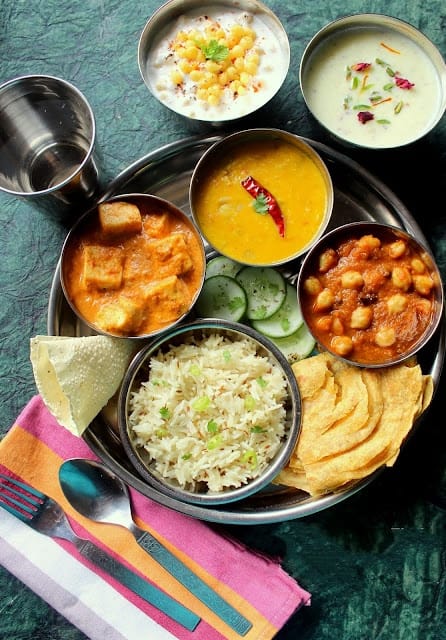
One need not worry about the accommodation if they have booked through travel agencies managing their stay. If that is not the case, one can find their accommodation around the temple. There are enough hotels and Ashrams near the temple to make room for the tourists. Some of the hotels around are New Hotel Snow Crest, Chandralok Hotel, Hotel Dhanesh Joshimath, GMVN Yatri Nivas, Himalayan Saro Resort, Sarovar Portico Badrinath, Hotel Dwarikesh, Narayan Palace Hotel, Pruthavi Seva Sadan, etc. Besides, there are Ashrams facilitate accommodation for a lower price. Some of them are Andhra Ashram, Tatambari Ashram, Sheshnetra Ashram, Sadhu Sudha Ashram, Shri Brahmrishi Sadhna Sangh Ashram, etc. All these are located in the vicinity of the Badrinath Temple.
There are many restaurants around the temple which serve pure vegetarian food. Non- vegetarian food is restricted in the holy premises.
Badrinath Dham Yatra Route
Badrinath is a Hindu holy town and a nagar panchayat in Chamoli district in the state of Uttarakhand, India. It is located at an elevation of 11204 feet (3415 mts), in the shadow of Nilkanth Peak and between Nar-Narayana Hills, Badrinath is a holy hindu pilgrimage situated on the banks of Alaknanda river.
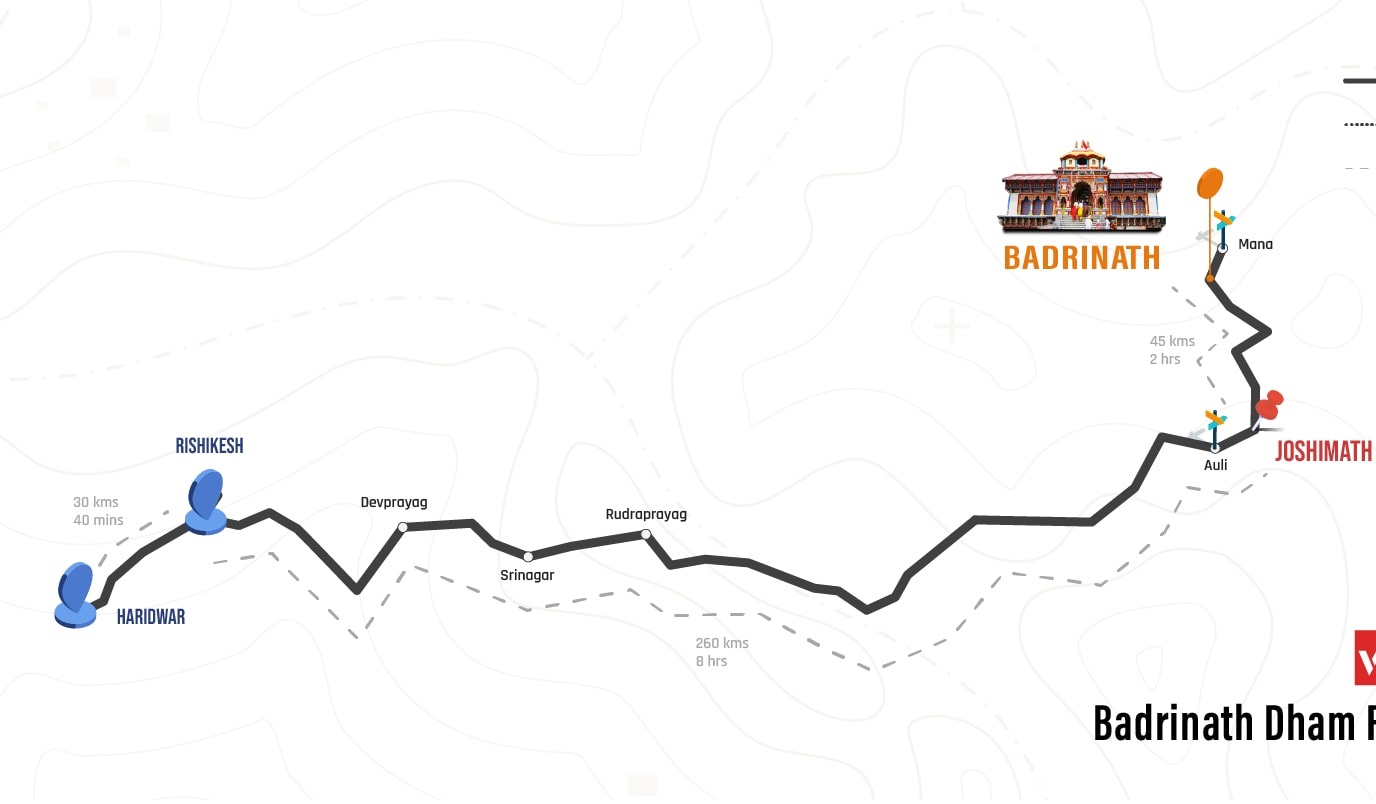
Kedarnath Popular Route : Delhi → Haridwar (206 km) → Rishikeh (24 km) →) Deoprayag (71 km) → Kirtinagar (30 km) → Shrinagar (4 km) → Rudraprayag (34 km) → Gauchar (20 km) → Karnaprayag (12 km) → Nandprayag (20 km) → Chamoli (11 km) → Birahi (8 km) → Pipalkoti (9 km) → Garur Ganga (5 km) → Helang (15 km) → Joshinath (14 km) → Vishnuprayag (13 km) → Govindghat (8 km) → Pandukeshwar (3 km) → Hanumanchatti (10 km) → Shri Badarinath Ji (11 km).
33.01hst8dmkw95ht0fmnzdyxyyrb@mail4u.run
33.01hst8dmkw95ht0fmnzdyxyyrb@mail4u.run